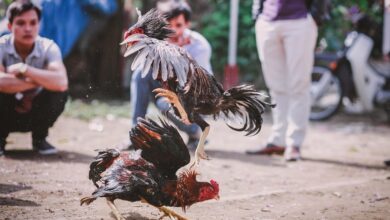The True History Behind St. Patrick’s Day
What are we celebrating at the festivity held every March 17th?.

The Woman Post | Thomas Handley
Listen to this article
Throughout time, St. Patrick's Day has become a festivity celebrated not only in different parts of the world but also in many different ways. Parades, green color, beer, and a three-leaved clover are some of the components this famous celebration host. But, do we actually know whose memory we are summoning as we celebrate? Let us dig a bit into history and learn more about who St. Patrick actually was.
St. Patrick's Early Life
Son to a deacon and grandson to a Roman Catholic priest, Patricius' (because that was his original name) was born around year 385 in Roman Britain. Surprisingly, given his antecessors, he was not an active believer. As he wrote in his own words in St. Patrick’s Confession, and due to religious persecution, Patricius was kidnapped and enslaved by Irish pirates at the age of sixteen.
St. Patrick’s Captive Years
Patrick was held captive for six years. During that time, he not only learnt the Celtic language, but also had a spiritual revelation. We can read in his confession that those years were actually an opportunity given to him by the Lord to be forgiven and to convert to Christianity. He worked as a shepherd and kept a tight relationship with God by means of prayer.
After the sixth anniversary of his captivity, Patrick heard a calling. It told him that his ship was ready to go home. He escaped from his master, arrived to a port, and got himself into a ship that took him someplace near Britain. Upon returning home, Patrick had a vision in which the Irish people called him to ‘walk among us.’ He then decided to become a priest and go back to Ireland as a Christian missionary.
St. Patrick’s Missionary Life
Patrick was found with much rejection when he arrived in Ireland, including his fellow Christians. It is said that the reasons for this were much related to the lifestyle he adopted during these years. He rejected gifts delivered to him by wealthy people and payments for baptisms. He ordained priests as a free-of-charge ritual and even paid a sort of salary to those who accepted accompanying him in his mission.
Many conversions in Ireland are attributed to Patrick’s mission. He baptized thousands of people, ordained priests to become leaders of the rising Christian communities, and converted women to become nuns. In his conversions, he included sons of kings. He mentions in his confession that he even had some trouble with part of the Irish elite. Although he did not write much about his conversions as regards numbers and methods, he does include the idea that, after his visits, the new Christians stopped venerating idols and became ‘children of God.’
The Shamrock and Other Events
During his mission in Ireland, Patrick recurred to a shamrock to explain the Holy Trinity. This caused this three-leaved plant to become an icon for Irish culture and even an unofficial national flower for centuries. During the early feast days of St. Patrick, those who lived in poverty wore the shamrock to look nice for the commemorative mass at church.
Also read: 5 DIFFERENT TRADITIONS TO CELEBRATE CHINESE NEW YEAR
As it happened with the shamrock and the Holy Trinity, Patrick is said to have led other important events that are still remembered after his death. He is attributed the banishing of snakes from Ireland, chasing them to the sea. His conversion of two pagan warriors is also an important event to remember, as he changed their feasting and fighting lifestyle to a more peaceful, Christian one.
St. Patrick’s Death and Festivity
Patrick died on March 17th, 461 A.D. at Saul, Ireland. Because of his missionary life and the transcendence this had in the country, he is always remembered on the anniversary of his death with parades and celebrations. People wear green clothes and accessories for it was said to make one invisible to conniving creatures by Irish folklore. Among shamrocks and the so-known leprechaun, parades and celebrations are held all over the world.
Curiously, the first celebration was not held in Ireland, but in a Spanish colony in the United States in 1601. The decision was made by the colony’s Irish vicar, Ricardo Artur. Throughout time, it has become a custom in many other countries, where celebrations vary in multiple ways.





